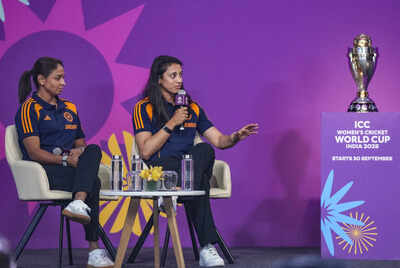Tier-2 takeover: Women’s ODI World Cup seeks new pastures | Cricket News

When India hosted the ODI Women’s World Cup in 1997, the final saw a near-capacity turnout at Eden Gardens in Kolkata that left Aussie legend Belinda Clarke’s “eardrums buzzing”. The event, played across 25 venues, was a success as matches played in smaller centres set a precedent for balancing prestige with outreach, inspiring young girls from tier-2 cities to believe that cricket could be a career. The 2025 ICC Women’s Cricket World Cup, kicking off on Sept 30, aims to channelize this legacy but faces challenges in its venue selection. While Sri Lanka host Pakistan’s games due to geopolitical constraints along with their own games, India have opted for Guwahati’s Barsapara Cricket Stadium, Indore’s Holkar Stadium and Visakhapatnam’s Dr YS Rajasekhara Reddy ACA-VDCA Stadium. Bengaluru’s M Chinnaswamy Stadium, initially a centerpiece, was dropped after the Karnataka government withheld permission, citing safety concerns following a stampede during Royal Challengers Bengaluru’s IPL victory parade on June 4. A judicial commission report labelled Chinnaswamy ‘fundamentally unsafe’ due to its design flaws and inadequate entry-exit points, forcing the BCCI to pivot to alternative venues like Thiruvananthapuram’s Greenfields Stadium. The 2025 venues, Guwahati, Indore, Visakhapatnam and Thiruvananthapuram — if it gets hosting rights — are tier-2 cities, which may not host any games during next year’s men’s T20 World Cup. Visakhapatnam’s 27,500-seat stadium has hosted ODIs and T20Is but lacks the storied legacy of Mumbai’s Wankhede (33,000), site of the 2011 men’s World Cup triumph. Guwahati’s Barsapara (40,000) and Indore’s Holkar (30,000), though upgraded post-2019, are seen as secondary compared to giants like Ahmedabad’s Narendra Modi Stadium (1,32,000) or Kolkata’s Eden Gardens (68,000), both steeped in World Cup history. Former India captain Shantha Rangaswamy loved playing in Bengaluru and Kolkata, but feels taking matches to tier-2 cities should be looked at as ‘progress’. “We need to take cricket to tier-2 cities. It’s a progress, though it may not look like that. We need to reach to the roots and widen our base. Bengaluru is supposed to be the best centre out of the four but reportedly the venue has lost the opportunity to host the World Cup games due to the stampede. It’s a shame, a personal loss. It would have helped boost women’s cricket in Karnataka which is at its lowest ebb,” she said.
Poll
Should cricket matches be hosted in tier-2 cities to promote women’s cricket?
Former India batter Anjum Chopra pointed out that a lot of thought must have gone into deciding the venues. “India has great cricket infrastructure. We have more than 30 international stadiums. I am sure before picking the venues there was a thought on how women’s cricket needs to be popularised and taken to different cities. I don’t think any venue is a poor venue. The men’s team will also be playing at that time and domestic cricket will also be on,” she explained. When India last hosted a women’s flagship event, the 2016 T20 World Cup, it leveraged eight premier venues, Mumbai, Kolkata, Chennai, Delhi, Dharamshala, Mohali, Bengaluru and Nagpur, drawing robust crowds and attention. By prioritising emerging regions this time, possibly the aim is to broaden the footprint, fostering growth beyond metro hubs. But only time will tell if it can live up to its ambitious vision.







